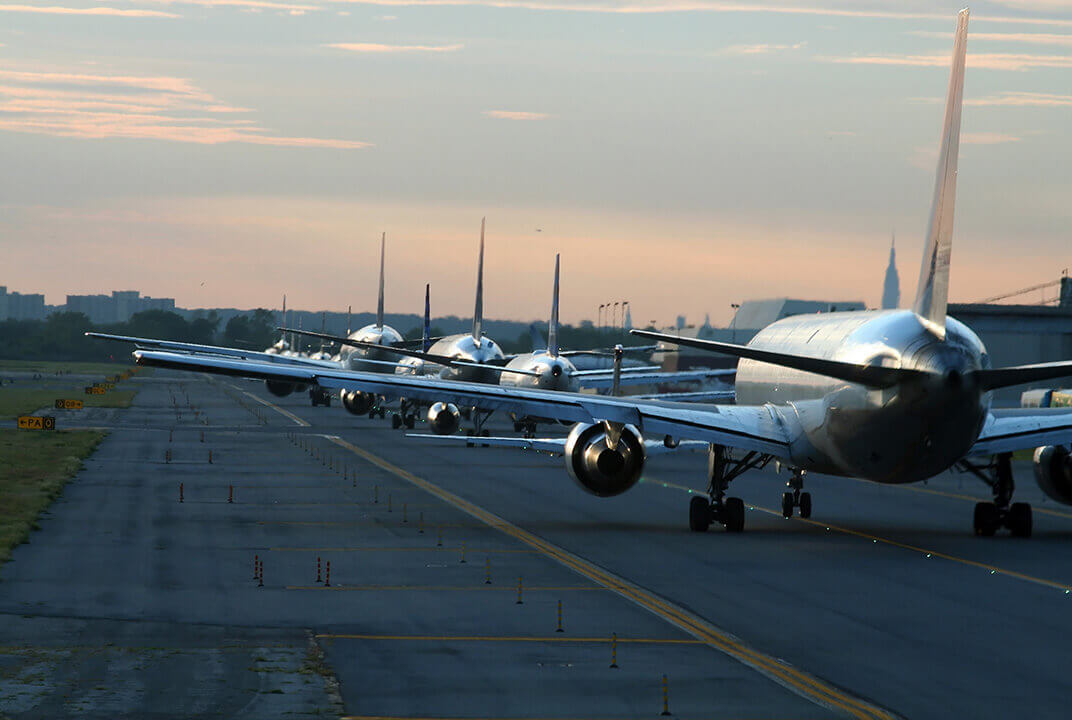Inmarsat and European Space Agency (ESA) to modernise air traffic management over Europe
Iris programme to support SESAR masterplan to alleviate airspace congestion, reduce flight times and delays, and enhance safety and security
Inmarsat, the world’s leading provider of global mobile satellite communications, has signed a major contract with the European Space Agency (ESA) to develop satellite communication services that enable 4D trajectory air traffic management in European airspace from 2020.
The Iris programme supports the Single European Skies ATM Research (SESAR) masterplan for next-generation air traffic management, which offers a strategic perspective of the critical developments that are required to deliver a high-performing aviation management system for Europe.
Iris is intended to provide secure and high bandwidth cockpit communications that are essential to accomplish SESAR’s objectives to optimise airspace, enhance safety and cybersecurity, and reduce flight times, delays and CO2 emissions. Powered by Inmarsat’s new SB-S platform, which is already being deployed by airlines, Iris’s enhanced IP-based capabilities will relieve pressure on currently crowded VHF radio links, which are near capacity.
Iris will enable the SESAR key concept of initial ‘4D’ trajectories, pinpointing an aircraft in four dimensions: latitude, longitude, altitude and time. This will enable precise tracking of flights and more efficient management of traffic through Trajectory-based Operations (TBO). TBO allows pilots and controllers to calculate the shortest available routes, cruise at optimum altitudes, and use continuous climb and descent paths, saving fuel and lessening the environmental impact of air travel.
Pilot-controller communications will move from voice communications to data link (text messages), increasing both operational safety and efficiency. Iris will also protect aircraft communications from cyber threats with security gateways. These gateways would provide a VPN barrier between the ground and each aircraft, assuring mutual authentication and integrity of data exchange. They will securely connect flight management systems on board the aircraft to the corresponding systems used by air traffic controllers on the ground.
The contract between Inmarsat and ESA marks a key phase of the Iris programme, following five years of development culminating in successful test flights. The two organisations will now work with prime partners Thales Alenia Space and CGI, in addition to a consortium of leading aviation and space companies, to finalise the technology before commercial rollout commences in Europe from 2020.
The programme will also demonstrate how satellite data link will evolve to become a primary means of communications for air traffic control.
Rupert Pearce, CEO of Inmarsat, said: “This is a strategically important project for us and our selection by ESA as the prime contractor underlines Inmarsat’s leadership and expertise in safety and operational communications for the aviation market.
“Iris is also fundamental to the future of European aviation and the economic growth of Europe. IATA forecasts that European passenger numbers to grow to 1.5 billion by 2036, but already Europe’s aviation industry is under intense pressure due to limited airspace capacity, which results in several billions of dollars of unnecessary cost to airspace users each year. The advanced capabilities of Iris will mark a step change, helping to address the limitations of today’s legacy protocols and paving the way for more efficient, cost effective air traffic management.”
Magali Vaissiere, ESA’s Director of Telecommunications and Integrated Applications, said: “It is hard to overstate the impact this new application of satellite technology will have on modern air travel. We have been working on the Iris programme with Inmarsat and our other partners since 2012, and are happy to now be able to implement the result of this extensive research and development to improve both the European economy and the lives of European citizens in this very tangible way.”
NOTE: For more information on Iris, a timeline for implementation and how the programme will benefit airlines, passengers and air navigation service providers, please visit our page.
Notes to editor
Inmarsat has a long-standing commitment to aviation safety and operations services. Airlines the world over trust our range of market leading, secure and reliable connectivity solutions that set the standard for flight deck communications. More than 95% of the world’s long-haul fleet use Inmarsat for these services today. And, with our new SB-S platform, airlines achieve total visibility into their global operation through the first global, secure broadband connection to the flight deck that delivers an unprecedented amount of data and security. This includes high-speed communications as well as data for Electronic Flight Bag connectivity and applications such as graphical weather, eTech logs, telemedicine and maintenance and performance information.
With our wholly owned and operated satellite network powering international commerce, Inmarsat is working with international aviation organisations to make flight safer, more efficient and more predictable. We are constantly building capabilities that anticipate the diverse and changing requirements of today’s customers.
Learn more about Iris.
Learn more about SB-S, including SB-S whitepaper.
Further information
About Inmarsat
Inmarsat plc is the leading provider of global mobile satellite communications services. Since 1979, Inmarsat has been providing reliable voice and high-speed data communications to governments, enterprises and other organizations, with a range of services that can be used on land, at sea or in the air. Inmarsat operates around the world, with a presence in the major ports and centres of commerce on every continent. Inmarsat is listed on the London Stock Exchange (ISAT.L).
The Inmarsat press release newsfeed and corporate updates are on @InmarsatGlobal.
Learn more about Inmarsat’s SB-S IP flight deck connectivity platform here.
Jonathan Sinnatt
Inmarsat Corporate Communications
Inmarsat
+44 (0)20 7728 1935
jonathan.sinnatt@inmarsat.com
Robeel Haq
Inmarsat Aviation PR
Inmarsat
+44 (0)20 7728 1352
robeel.haq@inmarsat.com
About the European Space Agency
The European Space Agency (ESA) provides Europe’s gateway to space.
ESA is an intergovernmental organisation, created in 1975, with the mission to shape the development of Europe’s space capability and ensure that investment in space delivers benefits to the citizens of Europe and the world.
ESA has 22 Member States: Austria, Belgium, the Czech Republic, Denmark, Estonia, Finland, France, Germany, Greece, Hungary, Ireland, Italy, Luxembourg, the Netherlands, Norway, Poland, Portugal, Romania, Spain, Sweden, Switzerland and the United Kingdom. Slovenia is an Associate Member.
ESA has established formal cooperation with six Member States of the EU. Canada takes part in some ESA programmes under a Cooperation Agreement.
By coordinating the financial and intellectual resources of its members, ESA can undertake programmes and activities far beyond the scope of any single European country. It is working in particular with the EU on implementing the Galileo and Copernicus programmes as well as with Eumetsat for the development of meteorological missions.
ESA develops the launchers, spacecraft and ground facilities needed to keep Europe at the forefront of global space activities.
Today, it develops and launches satellites for Earth observation, navigation, telecommunications and astronomy, sends probes to the far reaches of the Solar System and cooperates in the human exploration of space. ESA also has a strong applications programme developing services in Earth observation, navigation and telecommunications.
Learn more about ESA at www.esa.int
Giorgia Muirhead
ESA Telecom Communications Officer
+44 (0)1235 444 294
giorgia.muirhead@esa.int
Margherita Buoso
ESA Head of ECSAT Communications
+44 (0)1235 444 293
margherita.buoso@esa.int

